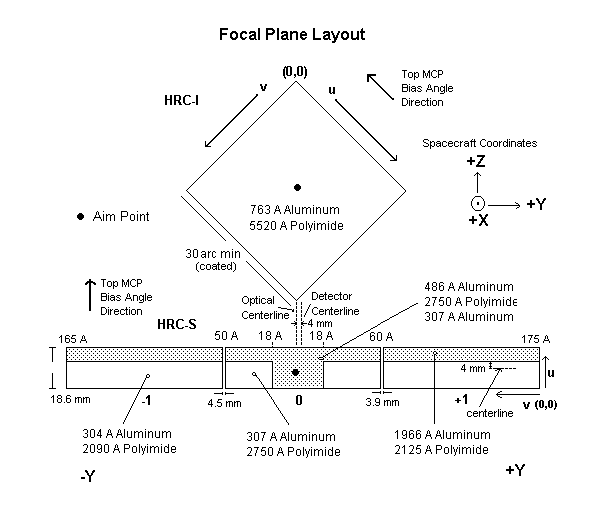Flat Field Maps (64 x 64; in absolute QE)
In order to download the fits files below, hold down the "Shift" key and click on "fits file".
How to display postscript plots with the Netscape browser.
Postscript images show a surface plot, frequency histogram, and u and v projections.
E(eV) 183 fits file postscript file 277 fits file postscript file 525 fits file postscript file 851 fits file postscript file 1487 fits file postscript file 4511 fits file postscript file 6404 fits file postscript file

Model QE of HRC-I MCPs. Data from the XRCF, flat field, and synchrotron calibrations and tests were incorporated in this model . No values below 277 eV are given due to experimental inconsistencies in the data.
Quantum Efficiency Calibration of HRC-I (postscript file)
Data table containing the HRC-I QE:
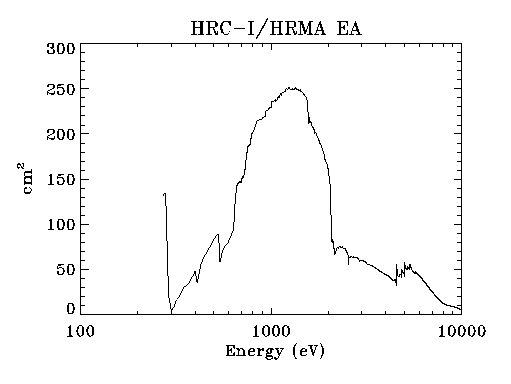
Model: hrci_uv.ps (postscript file)
Transmission of UV/Ion shield: hrci_uvt.prn
HRC-I Quantum Efficiency (MCP QE x UVIS Trans.): hrci_uvqe.prn
Transmission and QE files (prn) consist of two columns; first column: wavelength in Angstroms, second column; transmission or qe, respectively.
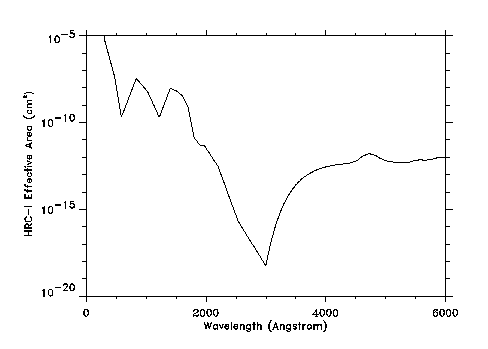
U, V axis: 6.429 microns per pixel
u dimension: 92.56 mmv dimension: 92.77 mm
Uncertainty is +/-0.05 mm.
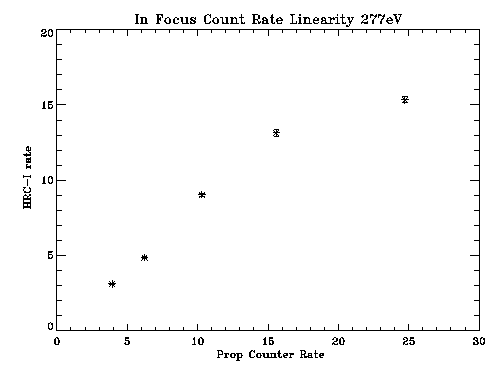
See also Count Rate Linearity of the AXAF High Resolution Camera (HRC), D. Pease and H. Donnelly (postscript file) or HTML file).
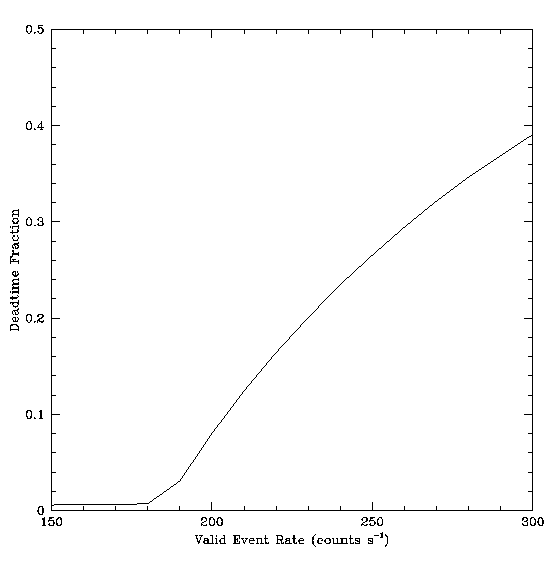
A model of electronic deadtime and telemetry saturation (extended source count rate linearity).
See HRC Deadtime and Telemetry Saturation, M. Juda and A. Dobrzycki (postscript file) for a complete discussion.
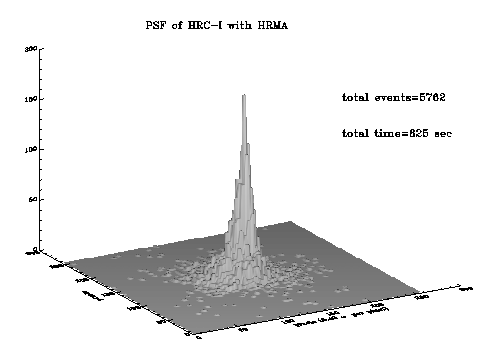
Surface plot of the point spread function of the combined HRC-I and HRMA at Carbon K alpha (277 eV). No FAM motion.
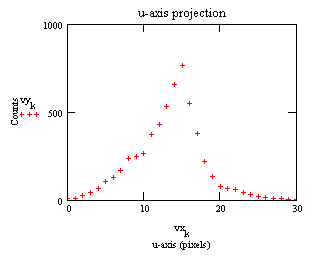
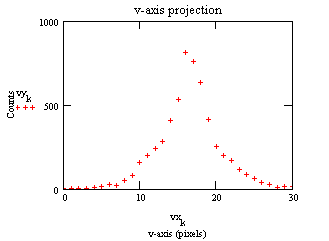
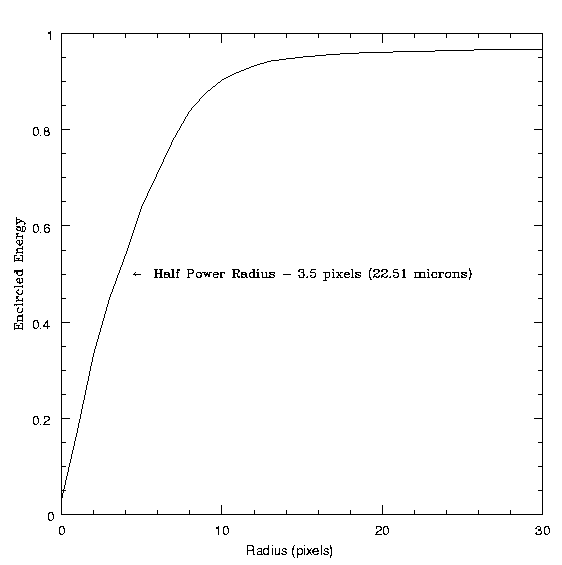
Pulse Height Distributions as a Function of Energy
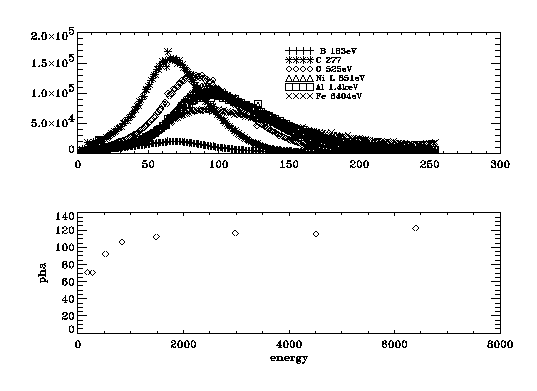
HRC-I pulse height distributions versus energy and the centroids of pulse height versus energy.
Quantum Efficiency vs Angle of Incidence
The relative quantum efficiency of a set of MCPs similar to the FM HRC-I MCPs was measured as a function of incident angle for the energy 1.49 keV at two azimuth angles. We have recently extended these measurements in our laboratory to more energies and azimuth angles. A report can be found at http://hea-www.harvard.edu/HRC/calib/pore_ang.ps (postscript file)

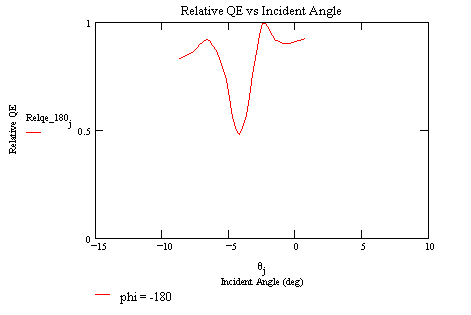
The following diagram defines the angles theta (incident angle) and phi (azimuth angle) for the measurements:
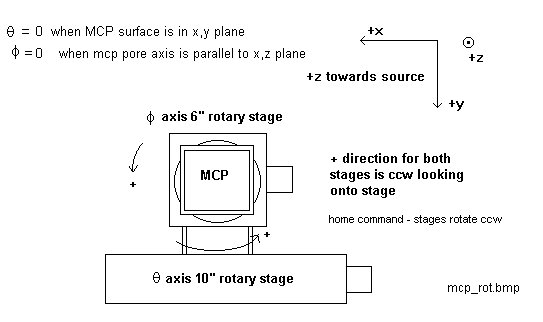
In-Flight
Degap Corrections (31 October 1999)
- U correction for positive fine positions:
hrci_cal_2_good_flatpu_deg.cor - U correction for negative fine positions:
hrci_cal_2_good_flatmu_deg.cor - V correction for positive fine positions:
hrci_cal_2_good_flatpv_deg.cor - V correction for negative fine positions:
hrci_cal_2_good_flatmv_deg.cor
For an explanation of the tables above:
Degap Corrections for HRC-I and HRC-S Detectors (A postscript memorandum)
Degap as a Transformation of Probability Distribution Problem (A postscript memorandum)
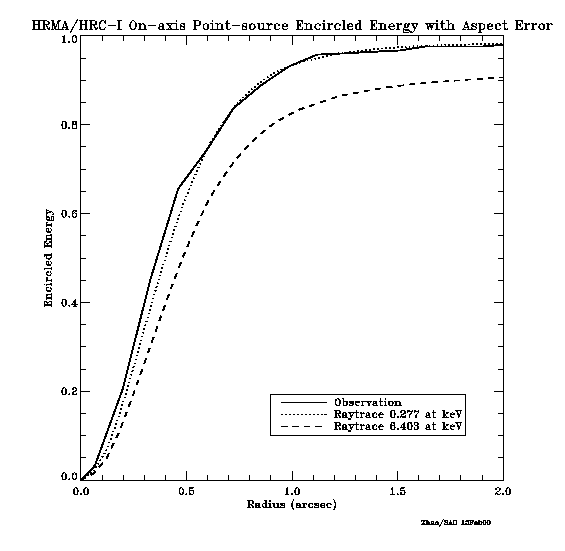
For the combined HRC-I/HRMA, the predicted and observed (AR Lac) fractional encircled energy as a function of radius for an on-axis point source. The predictions for 0.277 keV and 6.40 keV X-rays include contributions of the finite resolution of HRC-S and the aspect solution to the encircled energy.
Encircled Energy vs Angle Off-axis
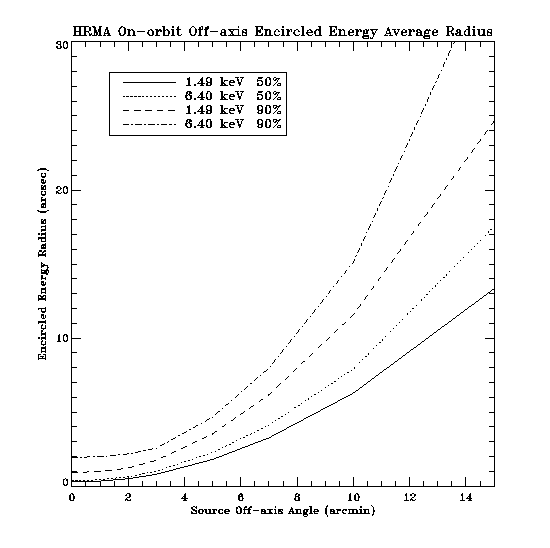
Encircled energy as a function of source off-axis angle for 50% and 90% encircled energy for 1.49 keV and 6.40 keV X-rays for the combined HRC-I/HRMA.
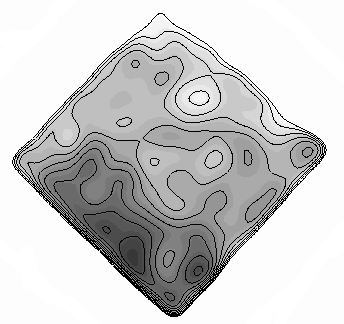
HRC-I background map during quiescent periods (anti-coincidence shield veto enabled and ground filtering of events). Average background is 9 x 10 -6 ct s-1 arcsec-2 with an approx. 10% gradient from bottom to top. The detector is oriented as in the Focal Plane Layout figure above (u=0, v=0, at the top corner). Smoothing was done via wavelet decomposition. Contours are 8.3 - 9.7 x 10 -6 ct s-1 arcsec-2. The background can increase from a factor 2 to 10 times the quiescent value due to charged particles. About 20% of the observing time is affected by these events.
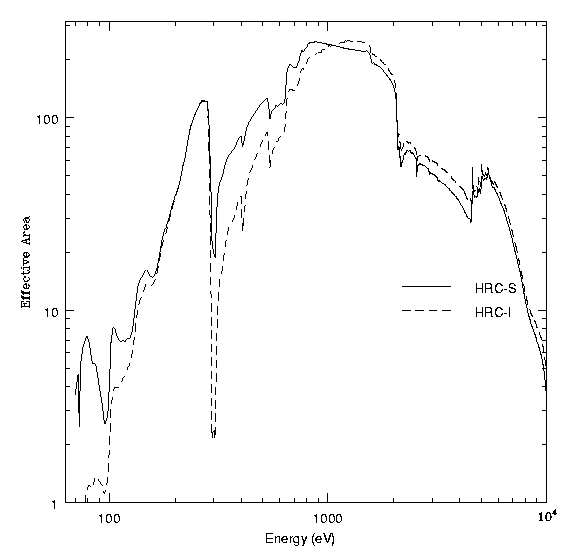
Effective area table (First column is energy in eV, fifth column is effective area in cm2)
References
Performance and Calibration of the AXAF High Resolution Camera: I. Imaging Readout (Kenter, A.T., et al., 1997; in postscript) gives details of the measurement procedures, analysis techniques, and results of the XRCF and flat field calibrations.
In-flight Performance of the Chandra High Resolution Camera (Murray, S.S., et al., 2000; in postscript)
In-flight Performance and Calibration of the Chandra High Resolution Camera Imager (Kenter, A.T., et al., 2000; in postscript)
The Out-of-band Response of the HRC on Chandra (Zombeck, M.V., et al., 2000, in postscript)
Event Screening for the Chandra X-ray Observatory High Resoloution Camera (HRC) (Murray, S.S., et al., 2000; in postscript)
Improving Chandra High Resolution Camera event positions via corrections to cross-grid charge detector signals (Juda, M., et al., 2000; in postscript)
Time Tag Investigation (pdf file)
The UV/Visible Light Sensitivity of the HRC, Chandra Calibration Workshop, 2002.
Response of the HRC to Vega, memo, October 28, 2002.
How to display postscript plots with the Netscape browser.
